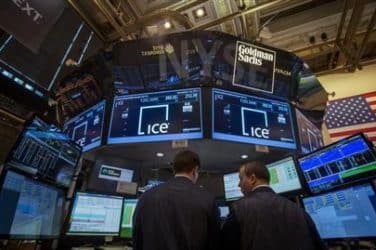
Executives from the major U.S. derivatives exchanges said that the futures markets are not biased toward any category of trader, especially high-frequency traders.
At a meeting on Tuesday of the Technology Advisory Committee of the Commodity Futures Trading Commission, the executives said that automated and high-frequency trading are an inevitable consequence of advances in technology which have benefited investors by boosting liquidity and raising certainty of execution.
“Algorithmic and HFT are products of the evolution of markets from a floor-based to an electronic model,” said Bryan Durkin, chief operating officer of CME Group. “Market participants have sought greater price transparency through more immediate trade execution to confirmation, and electronic trading has met that demand.”
Technological change has been the catalyst for more competitive, more efficient and more transparent markets, as well as substantial improvements in risk management, innovation, and regulatory capabilities.
“Algorithmic and HFT has contributed to significant volume growth across all asset classes, providing greater liquidity and tighter bid ask spreads,” said Durkin. “The liquidity generated by these market participants is relied upon by banks, hedge funds, asset managers, corporations, and commercial producers to achieve their risk management and investment objectives.”
The issues raised by Michael Lewis’s book Flash Boys illustrate the marked difference between the equities and futures markets, Chuck Vice, chief operating officer of Intercontinental Exchange, said at the meeting.
“Our company merged with NYSE six months ago,” he said. “My colleagues are knee deep in the equities markets, and our CEO, Jeff Sprecher, has been very vocal about the issues that were brought about in the book as practices that evolved over time.”
The equities market is characterized by extreme fragmentation, said Vice, with 13 exchanges and 50 trading venues, many of them off-exchange, lightly regulated dark pools that publish prices only after a transaction occurs. In futures markets, on the other hand, all transactions have to execute on exchange unless they meet various minimum requirements.
In equities markets, retail brokers of U.S. equities typically sell their customer order flow to competing HFT firms, Vice said. “We have much less retail participation in the derivatives markets, but the participation we do have is routed directly to exchanges,” he said.
Maker-taker pricing, which is the dominant pricing structure in the equities markets, has led to a “proliferation of extremely complicated order types that have conditional logic built in so the user of that order can maximize the chances of capturing a rebate or minimize the chances of paying a fee,” said Vice, adding that ICE doesn’t employ maker-taker pricing.
A common denominator of all traded products, whether cash or derivatives, is automated trading.
“Both markets obey the laws of physics,” Vice said. “There will always be a value to speed. A function of how fast you can access the exchange is a function of the investments you make in connectivity, firewalls, a million different things. Technology continues to advance forward.”
CFTC commissioner Scott O’Malia kicked off the meeting by noting Michael Lewis’s book Flash Boys has stirred up a debate about HFT and market structure. “The book claims that equities markets are “rigged” by HFTs that are front-running other traders’ orders,” he said. “The book raises other issues, such as HFTs having faster data feeds, exchanges paying brokers to take or provide liquidity, and HFTs co-locating within the exchanges.”
Durkin said CME has “created a market structure which we are proud of. In particular, we use a central limit order book, a single integrated marketplace allowing for concentrated liquidity in one transparent location.”





